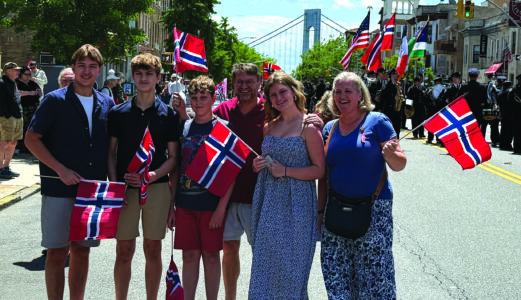The beauty of Saint Charles Borromeo Church’s stained glass windows, white marble floor and Bellville stone could not command the audience’s attention more than Theater 2020’s production of A Midsummer Night’s Dream, which cripples audiences with laughter and curiosity as it puts a unique spin on one of William Shakespeare’s most prominent and performed comedies.
At the start of the performance, actors burst through the front doors and glided down the main aisle of the church, sporting multi-colored circus clothes that costume designer Viviane Galloway modeled from the Japanese Harajuku style.
 “I wanted to create the impression that they’re actors from a circus troupe,” explained producing artistic director Judith Jarosz. “I had to think of the two spaces given to me. Because we’re doing the show in a gorgeous Gothic church and a park, I had to come up with a concept for my actors to work with logically. So I had them become a troupe that can discover and work in different spaces.”
“I wanted to create the impression that they’re actors from a circus troupe,” explained producing artistic director Judith Jarosz. “I had to think of the two spaces given to me. Because we’re doing the show in a gorgeous Gothic church and a park, I had to come up with a concept for my actors to work with logically. So I had them become a troupe that can discover and work in different spaces.”
The unique costumes comprised only a fraction of what made the production such a success. Expanding upon Jarosz’s vision, the actors explored the church, using the aisles, altar, and the pulpit as their stage, and interacting with their audience members. Actors frequently broke the “fourth wall” by addressing audience members directly and making eye contact, almost as if they were trying to convince them of their struggles, desires, and needs.
And they could not have been more convincing. Each actor radiated a playful energy that not only erased the confusion often caused by Shakespeare’s archaic diction and syntax, but redefined the realm of “comedy” the play embodies. Early modern and Elizabethan comedies were characterized not by their ability to amuse or make an audience laugh, but by their endings. Shakespearean comedies traditionally end in marriage, as opposed to tragedies, which end in death. Nevertheless, actors toyed with the play’s slapstick elements and the bemusement the characters experience.
In particular, Hermia’s (a punchy and witty Kristen Rose Kelly) reaction to Lysander’s “betrayal” of her love was hilarious. Even more, her fight with Helena (played by a powerful Liz Daingerfield) resembled a fight two teenage girls might have engaged in had they been fighting over the same love. While Shakespeare’s text certainly invites a reading of these two characters as lovesick teenagers, Daingerfield’s and Kelly’s interpretations of them were all the more relatable and entertaining.
Overall, there was not an actor who did not garner a laugh from the audience throughout the performance. Lysander’s (cleverly portrayed by Zack Krajnyak) revulsion toward Hermia when he is enchanted did not go unnoticed—his facial expressions were comedic, and his reactions hard-hitting.
Unconventionally portrayed by a woman, Puck (an ebullient Elise Reynard) had a distinct levity about her that underscored her thirst for mischief and tomfoolery. “We try to give women a chance in the arts without changing the text,” Jarosz elaborated. “There are so many more men in these plays, so our mission is to give women an equal opportunity, which is why we cast a woman as Puck.”
The play concluded with the players’ rendition of the tragedy of Pyramus and Thisbe. Arguably the most hysterical scene in the show, actors David Fuller, Allen Hale, Jake Levitt, Kelly Blaze, and Michael C. O’Day could not have made the audience laugh harder when they acted out the players’ abysmal attempt at putting on a tragic performance. It was—without question—the perfect end to an outstanding production.
Do not miss the opportunity to see this brilliant production of Midsummer Night’s Dream. Theater 2020 will be continuing performances on Friday, June 7, Saturday, June 8, and Sunday, June 9 at 7 p.m. in Granite Prospect at Pier One in the Brooklyn Bridge Park. For more information, visit www.theater2020.com or follow its Facebook and/or Twitter pages.


 Fifth Ave. Fest offers ‘fun’ for families
Fifth Ave. Fest offers ‘fun’ for families  On the Avenue: Norwegians march through Bay Ridge, celebrate heritage
On the Avenue: Norwegians march through Bay Ridge, celebrate heritage